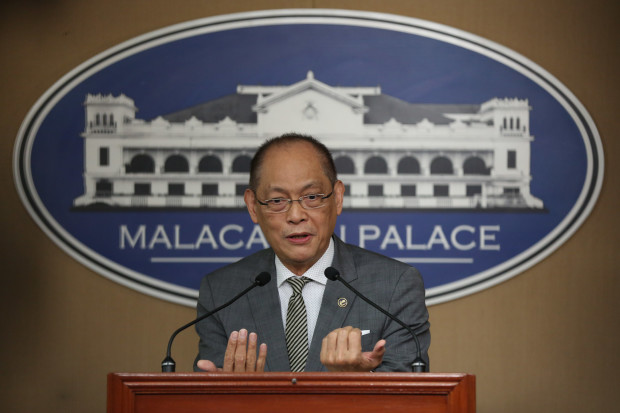MANILA — Government personnel will enjoy the second tranche of their salary increase this year, as the Department of Budget and Management continues the implementation of the executive order signed in 2016 by then president Benigno Aquino III in his last few months in office.
The DBM on Jan. 5 issued National Budget Circular No. 568 and Local Budget Circular No. 113 signed by Budget Secretary Benjamin E. Diokno to allow agencies to adjust compensation retroactively effective Jan. 1 under Executive Order No. 201 issued in 2016.
EO 201 raised the salaries of civilian personnel as well as granted new and increased allowance for military and uniformed personnel.
The EO mandated compensation adjustments in four annual tranches starting last year until 2019.
This increase in salaries and allowance, however, is yet to be passed as law by Congress. During the previous 16th Congress, then DBM chief Florencio B. Abad blamed the non-passage of the proposed Salary Standardization Law of 2015 (SSL 2015) to the congressional deadlock on the issue of the indexation of pension of military and uniformed personnel.
This year, the DBM said the government would grant the second tranche of provisional allowance for military and uniformed personnel, an interim measure pending the modification and rationalization of their base pay.
“The provisional allowance shall not form part of the base pay. Accordingly, the grant of provisional allowance shall not increase the longevity pay, pension and other collateral allowances which are indexed to the base pay,” the DBM said.
Certain ranks will also get the second tranche of their so-called “officers’ allowance,” which likewise will not be part of their base pay.
Military and uniformed personnel will nonetheless enjoy an increase in hazard pay this year to P540 per month from P390 previously.
The government has been looking at tempering pension increases—seen as a fiscal risk—once the base pay of active military and uniformed personnel are jacked up.
Based on documents on the 2017 national budget, the government will spend a total of P996.9 billion on personnel expenses this year, up from P817.5 billion in 2016.
The initial tranche of compensation adjustments under EO 201 in 2016 required P57 billion.
Data showed that the total number of permanent positions in government offices this year will be over 1.6 million, of which nearly 1.4 million positions are filled and 221,594 are unfilled.
EO 201 also mandated the grant of a midyear bonus—the “14th-month pay” equivalent to one-month basic salary, not earlier than May 15 of every year.
Previously, the yearend bonus or “13th-month pay” was given in two tranches — the first in May ahead of the opening of classes, and the second in November before the Christmas holiday season.
The National Budget Circular issued by the DBM prescribes the guidelines for the implementation of the EO for civilian personnel in the executive, legislative and judicial branches, including constitutional commissions, state colleges and universities, and government-owned and/or -controlled corporations covered by the Compensation and Position Classification System.
State-run corporations covered by EO 201 will have the funds for the pay hike charged against their approved corporate operating budgets.
The local budget circular, meanwhile, covers local government unit (LGU) personnel as well as barangay personnel positions that were being paid monthly honoraria.
In the case of LGUs, the funds shall be charged against LGU funds subject to the personnel services limitation in LGU budgets and income classification. SFM
